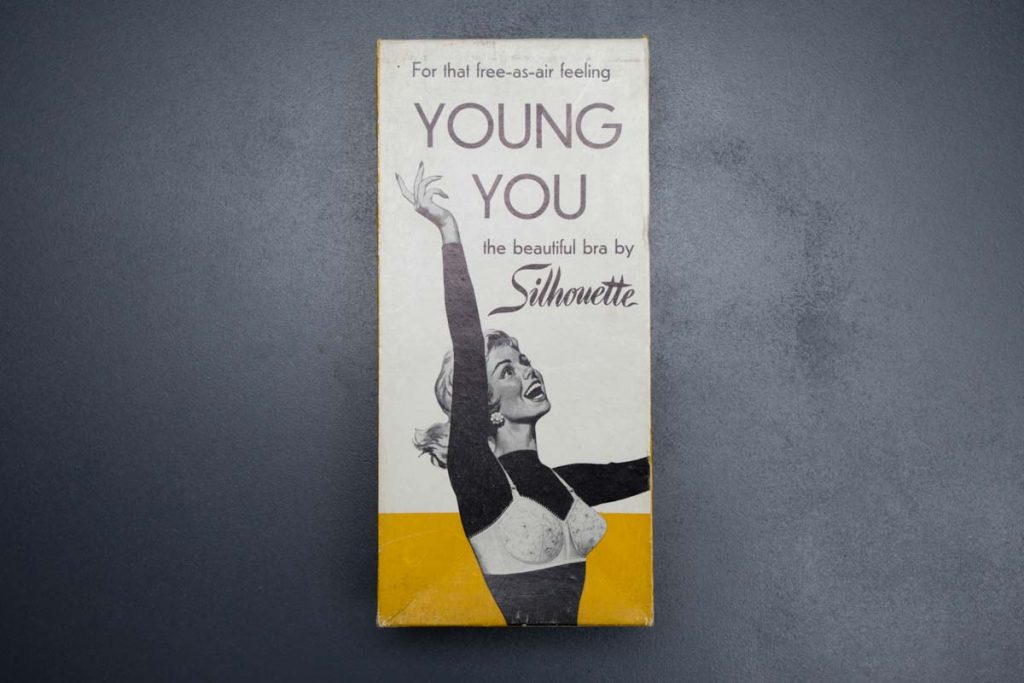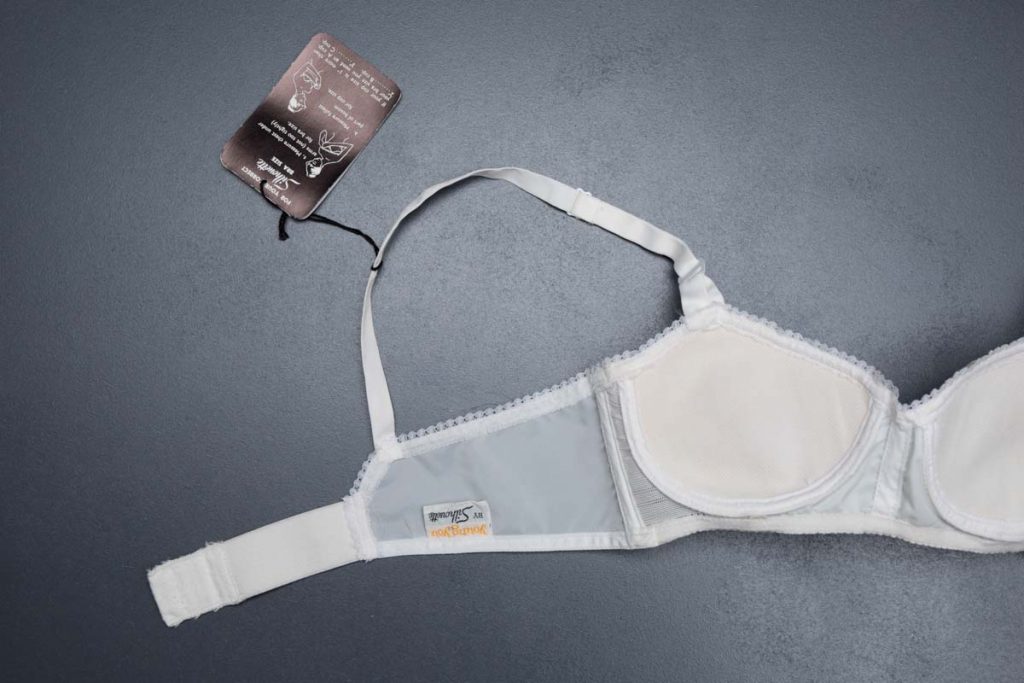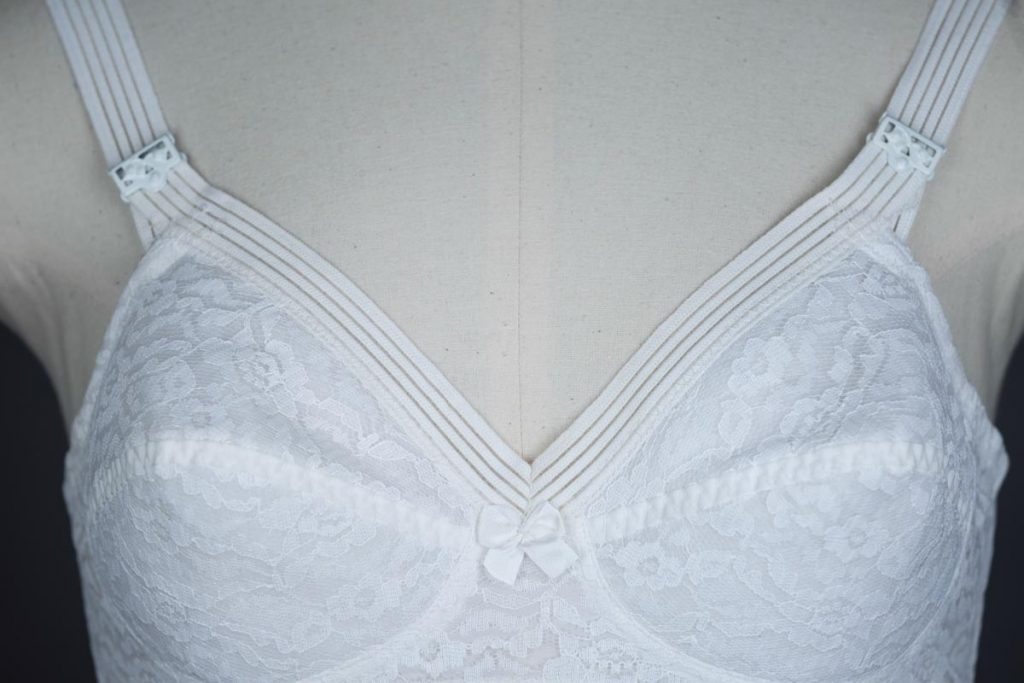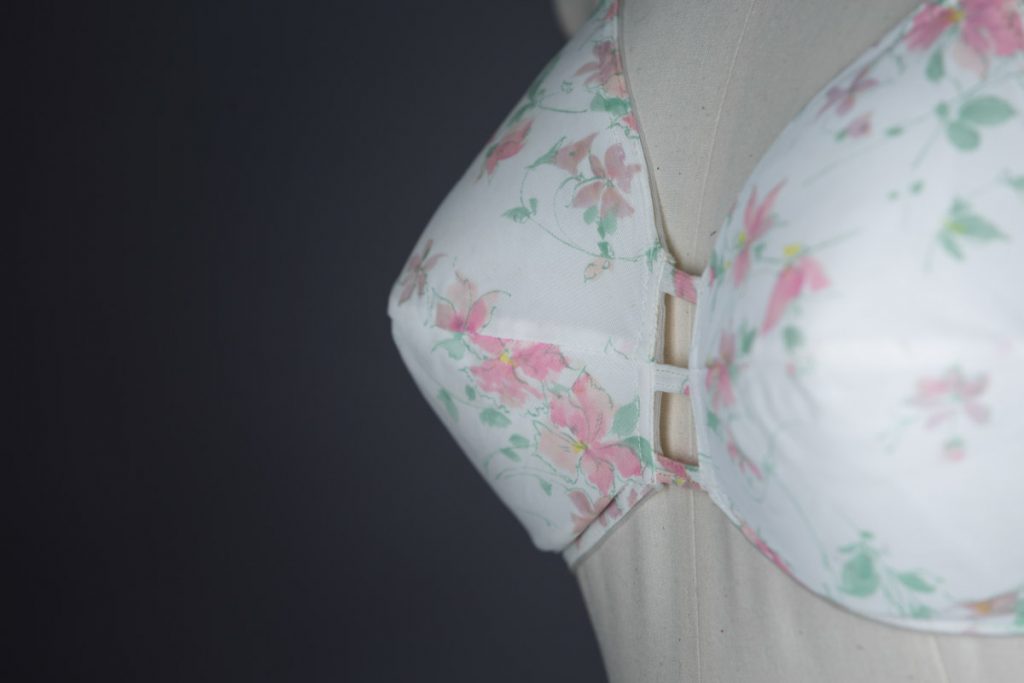By the time chemical companies were registering trade names for their particular versions of synthetic fibres, an increasing number of bra adverts were using the added promotional power and consumer awareness of these brands as a marketing tool. Du Pont had announced its new stretch fibre, Lycra, in 1959 and by the 1960s the majority of bras were made from a combination of nylon and Lycra. Advertising emphasised both the stretch straps and back of these bras, informing customers that ranges offered comfort in addition to control. Many images of models wearing bras with Lycra in the mid 60s showed them stretching the straps with their fingers to indicate this new feature.
After the dominance of bra styles which offered the wearer a way to dramatically alter the shape of her breasts, 1970s fashion saw a return to soft flowing lines with a simplicity of construction similar to that of bras from the 30s. Although heavily structured bras like the Wonderbra push-up plunge were selling well in the early 70s, the increasing popularity of a bra-less look throughout the decade led to some innovative new developments. The less structured and more seemingly ‘natural’ new styles provided increased comfort, aided by the use of soft knitted tricot fabrics and the development of seamfree cups. The moulding techniques of the 1950s continued to be developed into the late 70s as, when used in conjunction with lightweight knitted fabrics, cups made from a single piece of fabric could be produced to provide subtle support without showing through clothing.





